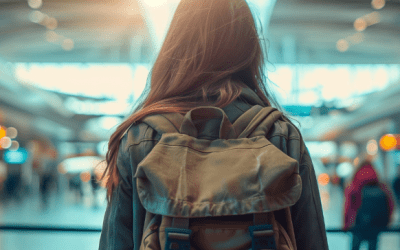The dynamics of the travel environment can sometimes be overly complicated. Not so long ago, the traveler’s attributes, behaviours, and demands were more simplistic and practical to address. Since then, the industry has been through changes in strategies and trends, arriving today, at a place where companies no longer hold full control upon outcomes.
Customers have gained ownership of their journey. The peer concept has spread, mainly thanks to shared economies, empowering customers that now only function through their preferred channels and make decisions based on first-hand reviews. The role of business in the customer journey has been minimized as conventional channels no longer seem to impact. Undoubtedly, the digital aspect of the current travel scenario is one of the reasons why customers’ demands and expectations change so rapidly.
Eye opener on travelers’ behaviour
There is never an end to the path of perfecting the customer’s travel journey. Nonetheless, being aware of travelers’ behaviour is the first step to deliver a better experience. Our Travelers’ Behaviour Survey uncovers the preferences of travelers in terms of trip planning to help companies adapt their interaction according to the customer’s needs.

The reasons behind the decision to travel are numerous. The motivator of each trip is what indicates the next steps that customers will take in their journey. For starters, the first main difference in motivation lies behind two concepts: business or leisure. The purpose of the client’s trip already tells a lot about the type of approach companies may take. For example, 84,4% of leisure travelers say that their primary purpose is to relax and disconnect. Having this knowledge already gives companies enough cues on the type of experiences to offer and which tone to use when conveying a message. But, to turn this information into something, it is essential to be at the right place at the right time.
With a variety of channels, from social media to websites and blogs, it may be challenging to know where to be present. It is true that during the inspirational phase of the journey, travelers resort to all types of sources. However, the focus on real reviews still put friends’ recommendations (66,2%) as the primary source for choosing a destination to go to next. Experiences (35,5%) and social media (32,6%) follows as second and third in line, opening a door for companies to engage.
After taking into consideration the appropriate channel, the key focus switches to the content. The quality of the content determines the level of involvement travelers will have with the brand. Good content has the power to attract and retain users, not only during the inspirational phase but also during the booking and in-destination stages. Evidently, developing content is not an easy task. Copy-pasting material from one stage to another will not do the trick. As travelers advance in their journey, the content shared changes, and sometimes so does the channel.
When it comes to providing information around experiences, the value of the content increases even more. Most customers choose what to do during their trip a few days before traveling. This gap presents an excellent opportunity to share different material regarding the attractions available at the destination. By doing so, companies provide a shortcut for travelers looking for this sort of content and, at the same time, promote their ancillaries. However, as 29,6% of travelers only book these experiences at the destination, it is crucial to maintain consistency in communication. Not only the “what to do” content that needs to be provided during the planning of the trip, but also after arrival at the destination, when travelers may be creating their itineraries as the days go by.
If not business, bleisure

Going back to the two main factors that motivate a trip, the business side is still very present. Industry players have already understood the importance of business travelers and are aware of the change in behaviour this target brings. Moreover, the frequency of such trips has generated the bleisure trend. The concept of the trend is not at all far from reality since 85% of business travelers are willing to extend their trip to explore the destination.
But, this intent does not always result in action. There is still a need to nurture these users with the right information to stimulate the change in purpose. Although the journey of business travelers starts with a very different approach as information is tailored to their work-related demands, the end may not differ as much. 77,6% of business travelers say that having information on what to do at the destination may increase their likability of extending their trip. Therefore, this type of information should come as the end of their journey approaches.
The travelers’ journey is long. Keywords, such as experiences, personalization, and bleisure are not just mere concepts. Understanding customers’ behaviour, channels, content, and timing is crucial when needing to develop strategies to cover each touchpoint. Uncovering the rationale of customers when deciding on and planning a trip, contribute to anticipating demands. Overall, a smooth journey results in a positive experience, and with that comes the honest reviews and word of mouth that can make travel players thrive.





